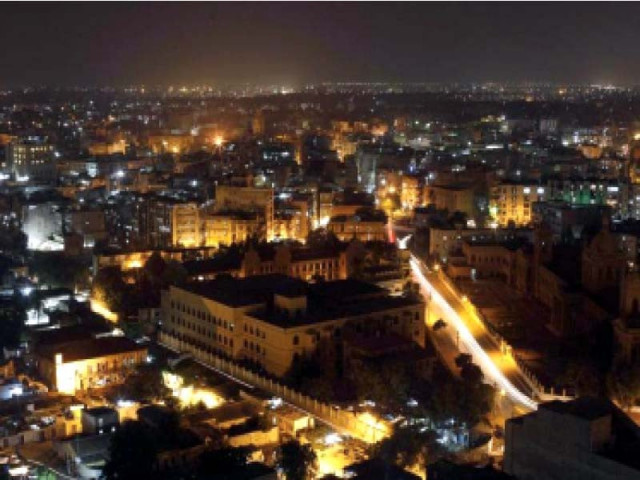CDWP okays high-interest loan
Will pay interest of around 4.9%, higher than some foreign commercial bank loans

Pakistan on Tuesday approved the terms for a new $500 million loan that it is taking, as part of the $2 billion foreign funding package, to distribute regular cash grants among the poorest, pay subsidies on fuel and rich exporters. According to the Planning Ministry officials, amidst the beginning of a pen-down strike from the Economist Group, the Central Development Working Party (CDWP) approved the concept for the clearance of the $500 million budget support loan from the Asian Infrastructure Investment Bank (AIIB) themed.
AIIB’s funding will come on top of the $1.5 billion loan approved last month from the Asian Development Bank (ADB). Pakistan is taking the two loans to finance the $2.4 billion Countercyclical Expenditure Plan. Details, however, show that these funds have been allocated to regular heads, and not ‘Exogenous Shocks’ which is the theme of the said loans. There are very small components that will be spent on any new initiatives that could offset the impact of global super commodity prices on the poor. The CDWP meeting was chaired by the secretary of the Planning Ministry in the absence of the Deputy Chairman of the Planning Commission, who happens to be Ahsan Iqbal.
The government had called an emergency meeting to endorse the concept of the loan, which is going to be presented to the AIIB Board today (Wednesday) for approval. On the request of the secretary planning, the Economist Group that began its pen-down strike on Tuesday, allowed two of its officers to attend the meeting. The group is demanding parity in pay structure, in line with 150% executive allowance that the government approved for blue-eyed bureaucrats with effect from July.
The additional secretary for finance informed the CDWP that the AIIB will give the loan based on its standard terms and conditions. The loan, however, has a maturity period of seven years, one of the shortest. Pakistan will pay an interest rate of around 4.9%, which also makes it one of the most expensive lending from a multilateral creditor. The interest rate is even higher than some foreign commercial bank loans.
The additional secretary of finance stated, in the meeting, that the loan would still be cheaper borrowing than market lending but he did not have the exact comparative data to back his statement. The loan is being contracted at the Secured Overnight Financing Rate (SOFR), which currently stands at 3.8%. Pakistan will pay 0.81% over and above the SOFR on account of a fixed spread and variable borrowing cost, taking the tally to 4.61%. Then there is a front-end fee of 0.25%, which is $1.25 million on a loan of $500 million. The government, however, does not have a choice but to take such expensive loans in order to meet this fiscal year’s estimated $34 billion foreign financing requirements.
The CDWP was informed that Pakistan’s economy was facing multiple shocks from sharply rising international commodity prices due to the Russia Ukraine war. Apart from that high inflation, currency depreciation, depleting foreign exchange reserves, rising food insecurity, and poverty impacting millions of Pakistanis are also playing a crucial role in the economic distress. The Ministry of Finance stated that tight capital market conditions have also restricted the government’s access to financial resources, resulting in them dropping their plans to float Eurobonds worth $2 billion.
The situation has been exacerbated by the massive flooding that took place in various parts of the country augmenting the immediate financial needs. Pakistan has informed foreign lenders that, in order to mitigate the adverse impact of the cumulative exogenous shocks, the government’s counter cyclical measures will amount to nearly $2.4 billion. Pakistan is already facing a liquidity crunch and needs support from development partners to meet such expenditures. A majority of the $2.4 billion expenses, however, are routine functions, except a $219 million subsidy on the provision of cheaper fuel to two million vulnerable households.
The second largest expense under, the so-called exogenous spending plan, is to provide subsidised electricity to rich exporters; a whopping $274 million or Rs61billion expense. The government had announced the subsidy in October, which is also being scrutinised by the International Monetary Fund (IMF). The single largest expense, however, is of $1.1 billion that will be used to provide cash grants to nine million of the poorest families in the country; this initiative comes under the Benazir Income Support Programme (BISP) and has been ongoing since 2008. The $8 million cost of the national socioeconomic registry has also been added to exogenous shocks related expenses.
Employee related expenses, for the administration of the BISP programme, worth $37 million have also been made a part of the special expenses plan. Details show that a sum of $324 million will be spent on food security measures. This includes a $32 million subsidy for the Pakistan Agricultural Storage & Services Corporation (PASSCO), a $78 million subsidy for the Utility Stores Corporation, a $68 million subsidy for fertiliser plants to offset the impact of high LNG costs and a $27 million subsidy on the import of urea. Aside from this, a $46 million subsidy has been mentioned for agriculture relief initiatives and $73 million for sales tax exemptions on the import of seeds and tractors.



















COMMENTS
Comments are moderated and generally will be posted if they are on-topic and not abusive.
For more information, please see our Comments FAQ